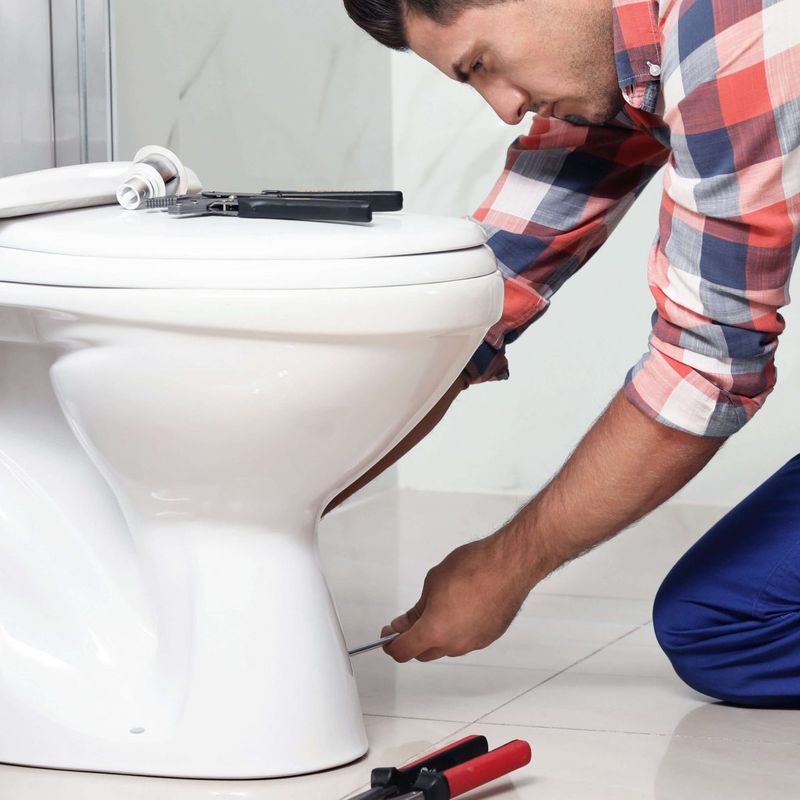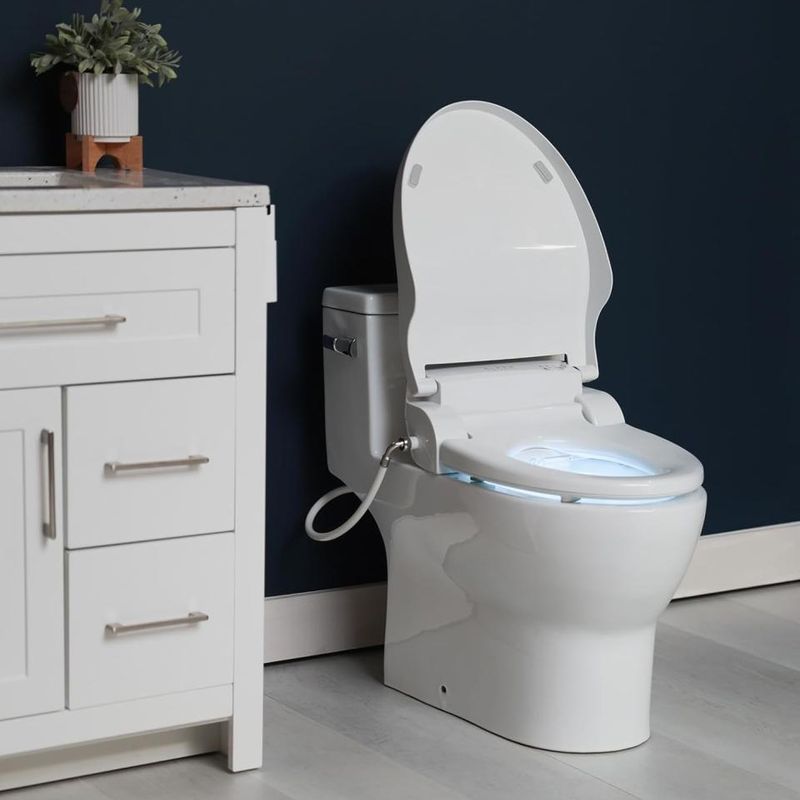 English
English
Jabra Sanitary is a sanitaryware supplier offering toilets, sinks, faucets, bathtubs, etc., at competitive prices. If you're a distributor, wholesaler, or project contractor, get a quote today!
 $23.9 Limited-time Offer
$23.9 Limited-time Offer Consignment Policy
Consignment Policy 20 Years of Experience
20 Years of Experience
Toilets are one of the most significant consumers of water in any household. Their efficiency directly impacts our water usage and environmental footprint. In the quest for sustainable living and water conservation, understanding toilet water consumption is crucial.
This article examines how much water it takes to flush a toilet for different toilet types and the environmental impact of toilet water consumption. Additionally, we offer tips for reducing toilet water usage to conserve water resources.
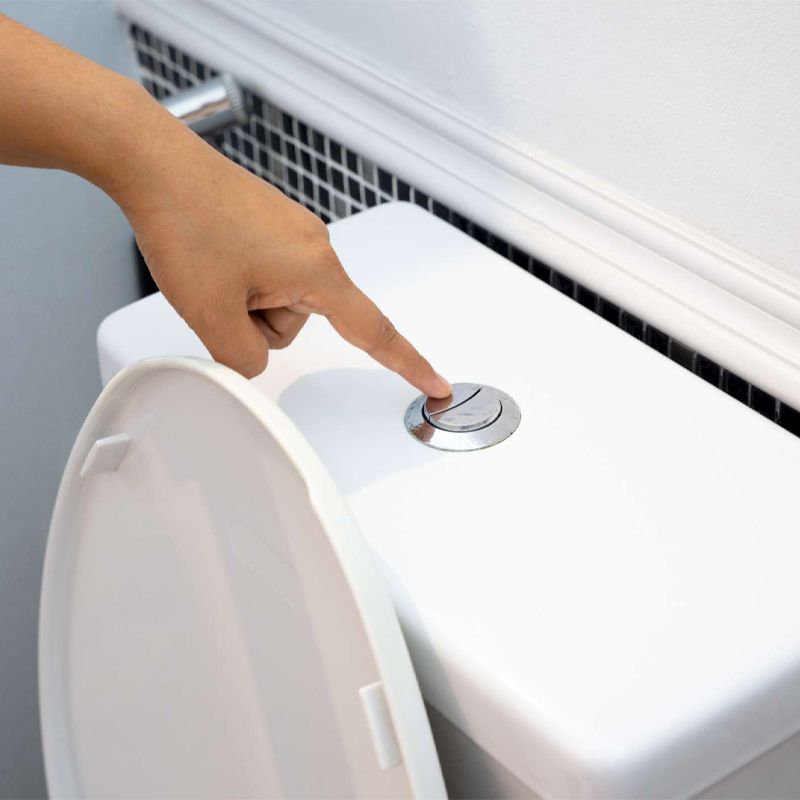
Table of Contents
What Are Gallons Per Flush (GPF)?
National Water Efficiency Standards of American Toilets
Find Your Toilet's GPF: How Much Water is in a Toilet Flush
Toilet Water Consumption by Type
Toilet Flush Water Usage and Impact on Household Water Bills
Tips for Reducing Toilet Water Usage
Environmental Impact of Toilet Water Consumption
Upgrade to Water-Efficient Toilets
FAQs
Conclusion
What Are Gallons Per Flush (GPF)?
Gallons per flush (GPF) is a crucial metric in the sanitary ware industry. It specifically refers to the amount of water used by a toilet during a single flush.
On the one hand, this measurement is essential for understanding water consumption and conservation efforts for homeowners. On the other hand, the GPF rating is a key factor for consumers when choosing a toilet, as it directly impacts the efficiency and environmental footprint of their bathroom fixtures.
In conclusion, understanding the GPF rating is not just about choosing a toilet that meets regulatory standards. It's about selecting a product that aligns with both personal and environmental sustainability goals.
National Water Efficiency Standards of American Toilets
The United States has established national water efficiency standards for toilets to conserve water and reduce household water usage.
These standards were first introduced in 1992 with the Energy Policy Act, signed by President George H. W. Bush. They came into effect in 1994. The standards mandate that all new toilet models use no more than 1.6 gallons per flush. It is a significant reduction that has helped save water and reduce costs for households.
Twelve states and Washington, D.C., have adopted standards that exceed the federal requirements. These state-level standards further promote the use of high-performing and water-efficient toilets.
The market has responded to these standards with innovations in flushing mechanisms and bowl designs. Therefore, toilets that perform well while using less water emerge.
The Environmental Protection Agency (EPA) has also played a role in promoting water efficiency through its WaterSense program. The program recognizes and labels products that meet high standards of performance and water efficiency. Toilets that bear the WaterSense label use less than 1.6 gallons per flush.
These national standards have not only helped in conserving water but have also driven manufacturers to innovate. The standards help to save billions of gallons of water annually.
Find Your Toilet's GPF: How Much Water is in a Toilet Flush
Determining the gallons per flush (GPF) of your toilet is essential for understanding its water consumption and adjusting it.
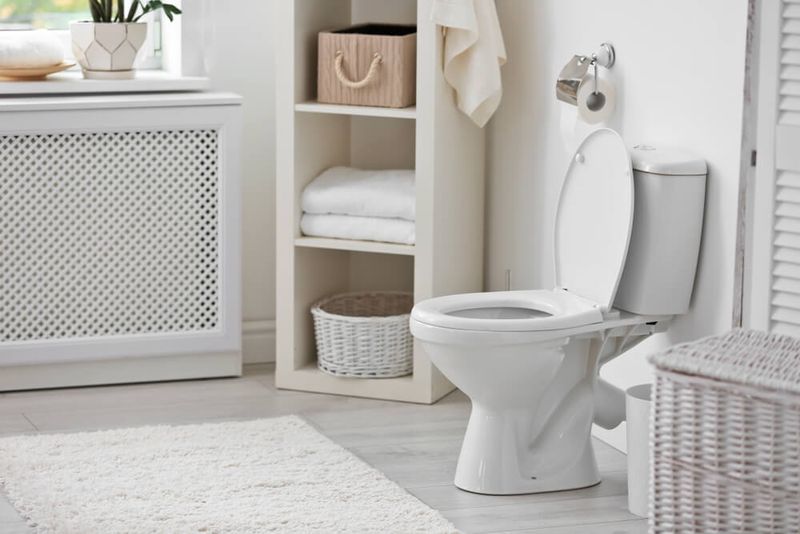
Here is how to know how much water to flush a toilet and consider toilet upgrades:
Identifying the GPF Rating on the Toilet
The GPF rating can be found on a label located on the inside of the toilet tank, behind the toilet bowl, or on the exterior of the tank. This information is key to understanding the water consumption of your toilet.
Check GPF Numbers on Dual Flush Toilets
Dual-flush toilets have two GPF numbers: one for the full flush (usually 1.6 gallons) and one for the half flush (typically 0.8 to 1.0 gallons). These numbers indicate the toilet water usage for each flush type. They provide flexibility in water conservation.
Manufacturing Date Identification
To determine the manufacturing date of toilets, look for a date stamp on the same label as the GPF rating. This can help you assess the efficiency of older models and consider upgrades to more water-efficient toilets.
Toilet Water Consumption by Type
Understanding toilet water consumption is vital for both environmental conservation and household cost savings. The gallons per flush (GPF) rating is a key indicator of a toilet's water efficiency.
A standard toilet in the United States uses 1.6 gallons of water per flush, which is the current federal standard. However, newer, more efficient toilets can use as little as 1.1 gallons per flush.
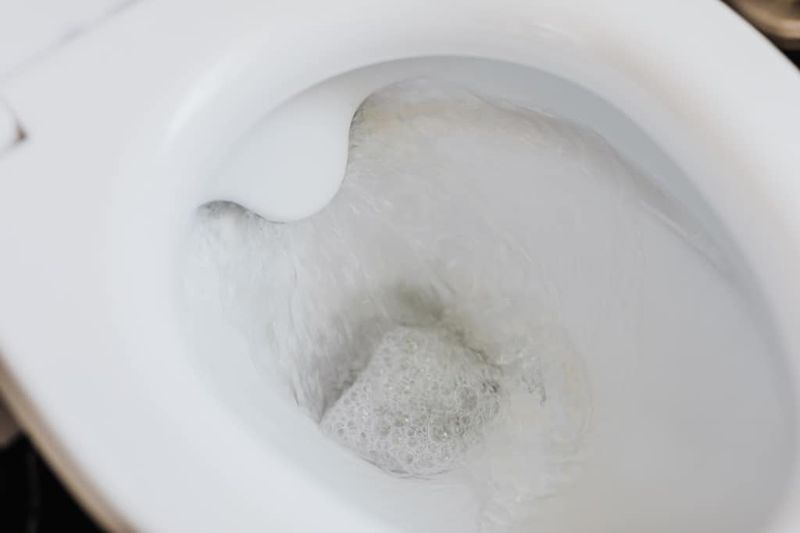
Here is the different toilet water consumption for three types of toilets:
Standard Gravity-Flush Toilets
Standard gravity-flush toilets are the traditional models. They operate on the principle of using gravity to flush waste.
They typically consume 1.6 gallons per flush (GPF), as mandated by the U.S. federal standards post-1992. These toilets are widely available and are known for their reliability, though they may not be the most water-efficient option.
Dual-Flush Toilets
Dual-flush toilets offer a choice between a full flush (1.6 GPF) and a half flush (0.8 to 1.0 GPF), depending on the user's needs.
This feature allows for significant water savings, especially for liquid waste, where the half flush is sufficient. Dual-flush toilets are an excellent choice for those looking to reduce water consumption without sacrificing performance.
High-Efficiency Toilets (HET)
High-efficiency toilets, also known as HETs, are designed to use even less water than the standard 1.6 GPF.
These toilets often use around 1.28 GPF or less, while still maintaining effective waste removal. HETs are at the forefront of water conservation in the bathroom. They provide a balance between eco-friendliness and functionality.
By choosing a toilet with a lower GPF, homeowners not only reduce their water bills but also contribute to global sustainability efforts.
Toilet Flush Water Usage and Impact on Household Water Bills
By examining the impact of different toilet types and flushing practices, we aim to shed light on the potential savings achieved through water-efficient toilets and practices.
In doing so, you can make informed choices for both economic and environmental benefits. Here is the breakdown:
Impact of Flushing on Water Bills
Toilet flushing is a significant contributor to household water usage. It accounts for nearly 30% of indoor water consumption in the United States.
On average, toilets can use up to 20 gallons (76 liters) of water per person per day. This consumption has a direct impact on water bills.
This is because a higher frequency of flushing and more water used per flush lead to higher bills.
Savings with Efficient Toilets
Installing WaterSense-certified high-efficiency toilets can lead to a reduction of over 20 gallons used per person, per day, compared to pre-1992 models. These modern toilets use just 1.28 gallons per flush or less, which can result in substantial savings on water bills.
Additionally, adjusting flush valves, using tank displacement methods, and avoiding unnecessary flushing can further reduce water usage and lower bills.
Long-Term Cost Reduction
Optimization models show that long-term conservation measures, such as updating showerheads and water heaters, can lead to significant cost savings for households. While these measures also apply to toilets, the potential for cost reduction is substantial.
For instance, a household in Shanghai could save an average of CNY 149.42 in energy costs annually through reducing toilet flush water usage. This indicates that efficient toilet use not only conserves water but also reduces household expenses in the long run.
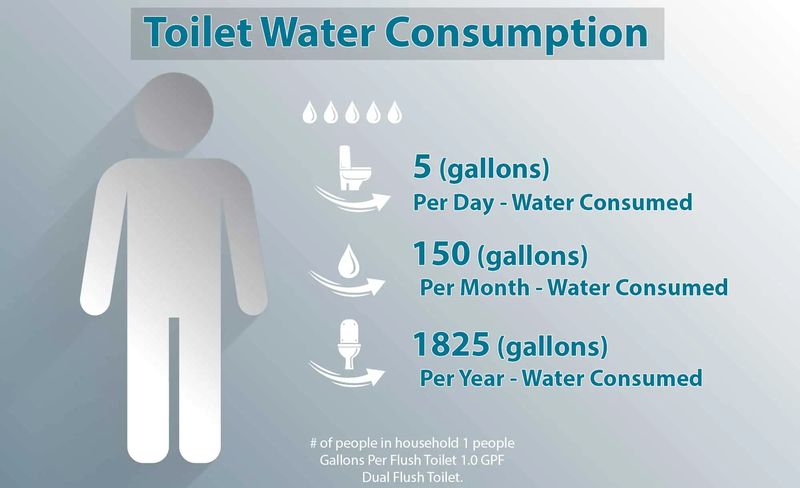
Tips for Reducing Toilet Water Usage
You can significantly lower your toilet water consumption and save on your water bills by making a few simple adjustments and adopting some smart habits.
Here are some practical tips to help you minimize the water your toilet uses with each flush:
Reduce the Tank Volume
One of the most straightforward ways to reduce toilet water usage is by reducing the tank volume. This can be achieved by placing a filled water bottle or a tank bag in the toilet tank.
This practice displaces some water without affecting the flush performance. This simple trick can save up to a gallon of water per flush.
Adjustable Flapper
Another effective method is to adjust the flapper valve, which controls the water flow out of the tank. By adjusting the flapper, you can reduce the water used per flush.
Ensure that the adjustment is done correctly to maintain the toilet's effectiveness.
Fill Cycle Diverter
Installing a fill cycle diverter can also help in reducing water usage. This device allows you to use less water in the tank while still maintaining enough water in the bowl for an effective flush.
It's a small change that can lead to significant water savings over time.
Check for Leaks
Lastly, regularly check your toilet for leaks. A continuously running toilet can waste up to 200 gallons of water per day. Listen to the sound of running water when the toilet is not in use.
If you suspect a leak, address it promptly to save water and money.
Environmental Impact of Toilet Water Consumption
Toilet water consumption is a significant contributor to household water usage. Its environmental impact is a critical concern.
The environmental implications of this consumption affect water conservation, aquatic ecosystems, and the global warming potential. Here is a breakdown:
Water Conservation Practices
Water conservation practices, such as installing low-flow fixtures and dual-flush toilets, can reduce water consumption significantly.
Dual-flush systems use an average of 1.28 gallons per flush. It is a substantial reduction from traditional models. These practices not only save water but also contribute to maintaining aquatic ecosystems and protecting drinking water resources.
Global Warming Potential
The global warming potential is affected by toilet water consumption, particularly in scenarios where greywater reuse systems are installed.
These systems require additional components and materials. This can increase the environmental impact during the production phase.
However, the use of dual-flush valve devices can reduce water and energy consumption, leading to a decrease in global warming potential.
Economic and Environmental Feasibility
Replacing single-flush valve devices with dual-flush devices in toilets can lead to an average reduction of 26.97% in toilet water consumption.
This reduction not only benefits the environment but also aligns with economic considerations. This is because water and energy costs are the largest expenses in the use phase across various scenarios.
Upgrade to Water-Efficient Toilets
Given the economic and environmental impact of much toilet flush water consumption, upgrading to water-efficient toilets is a smart move. Modern toilets offer significant water savings without sacrificing performance.
Here is how to choose an energy-efficient toilet:
Look for WaterSense Labels
When shopping for a new toilet, look for the WaterSense label. WaterSense toilets are certified by the EPA to be at least 20% more efficient than standard models.
They use no more than 1.28 gallons per flush. These water efficient toilets can save water without compromising on flush performance.
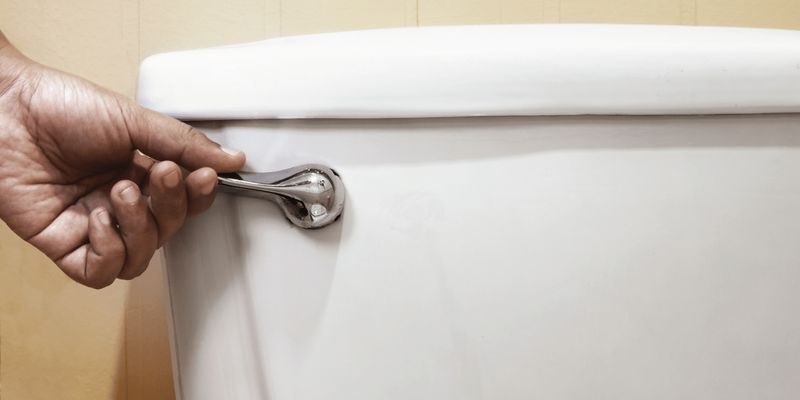
FAQs
Here, we share some common questions about toilet flushes, water savings, and efficiency.
(1) How many flushes are in a toilet tank?
The number of flushes a full tank can provide is typically just one. Each flush uses the entire tank's contents, which then refilled for the next use.
A standard residential toilet tank typically uses 1.6 gallons (6 liters) of water per flush. Dual flush toilets usually 1.6 gallons for solid waste and 0.8-1.1 gallons for liquid waste.
There are also high-efficiency toilets (HETs) that use 1.28 gallons or less per flush while still maintaining good performance. However, older toilets installed before 1992 may use 3.5 to 7 gallons per flush.
(2) Do automatic flush toilets save water?
Automatic flush toilets, often found in commercial settings, can save water by reducing the volume per flush. However, they may not be as efficient in residential settings due to potential misuse or unnecessary flushing.
Automatic flush toilets tend to use a higher volume of water per flush (often around 2-3 gallons) compared to modern manual toilets (1.6 gallons or less) because they're designed to ensure adequate cleaning without human judgment. Sensor malfunctions can cause repeated flushing or continuous running.
(3) Is it possible to adjust the water level of the toilet flush?
Yes, adjusting the water level in the tank can reduce the flush volume. This can be done by adding a displacement device or adjusting the fill valve. But it should be done carefully to ensure the toilet still functions properly.
(4) How much water do you save by not flushing the toilet?
By not flushing for urine, a household can save up to 30% of their toilet water usage. However, it's important to maintain hygiene. So this practice is typically recommended for select situations.
(5) How much water do toilets use per day?
The average toilet uses about 27% of a household's indoor water. This can amount to 36 to 72 gallons per day for a family of four, depending on usage and toilet efficiency.
(6) How much water does a low-flush toilet save?
The average household has about 5 flushes a day. An older toilet uses 7 gallons per flush, a newer one could be as low as 1.6 gallons per flush. If it is 7 gallons that is 12,775 gallons per year on flushes. At 67% that would eliminate 8,559 gallons of water usage per year in your household.
Conclusion
In summary, how much water to flush a toilet can vary significantly based on the type of toilet and its settings. You should know your toilet water consumption and determine if you adjust.
By opting for water-efficient models, such as those with a low gallons per flush (GPF) rating or those certified by WaterSense, you can substantially reduce your water consumption.
Embracing water-efficient solutions is not just smart for our homes—it's essential for environmental sustainability.









